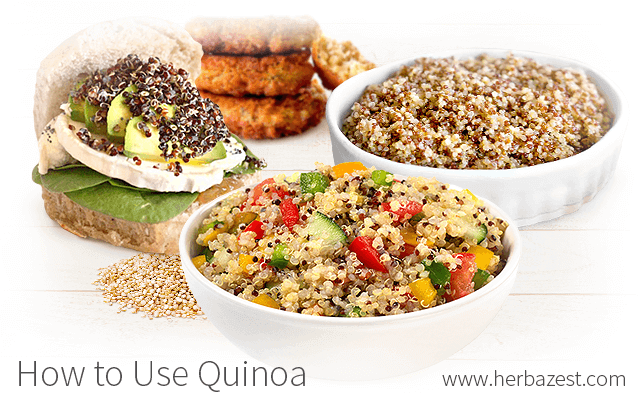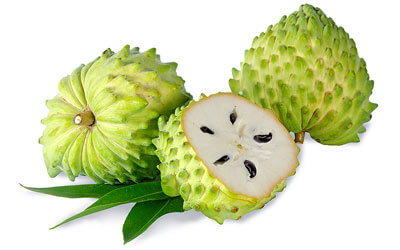Most people have heard of quinoa's nutritional benefits, but many might be unsure how to use quinoa in everyday cooking. Keep on reading to discover how to use quinoa to complement your daily meals and reap the most of its health benefits.
Cooking Quinoa
While there are many things to do with quinoa, cooking it is the most common form of consumption. It is often used as a more nutritious replacement for rice, prepared as a side dish, or added to soups and salads.
The different quinoa varieties available may also influence what is quinoa used for. When cooked, white quinoa is the fluffiest, stickiest, and has the mildest taste, making it an ideal rice substitute. Red quinoa, on the other hand, is crunchier, not as sticky, and has a stronger taste, making it ideal for salads. Black quinoa is also crunchy and has an earthy and mildly sweet flavor. For that reason, it is also best for fresh poke bowls and salads.
Regardless of its variety, you will enjoy cooked quinoa in these vegetarian quinoa meatballs, chocolate quinoa bowl,or this high protein quinoa caprese.
Eating Raw, Sprouted Quinoa
Quinoa can also be consumed raw and sprouted. To sprout raw quinoa, the seeds should be rinsed, soaked for eight hours, drained, and allowed to sit for another six hours. Germination activates natural enzymes in quinoa, helping to soften the seed and make it more digestible. Once sprouted, raw quinoa makes for an excellent addition to sandwiches, wraps, salads, no-bake desserts, and parfaits.
It is worth keeping in mind that some of quinoa's nutrients are heat sensitive and will degrade during the cooking process.
RAW QUINOA'S NUTRITIONAL VALUE INCREASES WHEN IT IS SPROUTED.
A study published in the International Journal of Scientific Research (2015) found that germination increases many of quinoa's nutritional components, including lysine, methionine, tryptophan, calcium, magnesium, iron, zinc, and dietary fiber.1
Other Ways of Using Quinoa
Besides cooking quinoa or eating it in its raw, sprouted state, there are other ways to use the grain. They include the following:
Quinoa flour is often used for gluten-free or low-gluten baked goods. In many recipes, quinoa can partially replace traditional wheat flour, between 20-50%. This red quinoa bread with sunflower seeds, quinoa pumpkin bread, and gluten-free red quinoa madeleines are an easy way to use quinoa in flour form.
Quinoa flakes are an excellent addition to breakfast foods, such as waffles, pancakes, and hot cereals. Quinoa flakes can also be used as a protein boost for smoothies or as an alternative to oats in muffins and cookies. They are wonderful in these quinoa oatmeal cookies, Mexican quinoa flake-stuffed peppers, or quinoa flake porridge.
- Quinoa pop is a convenient and fun way to use quinoa. Crunchy popped quinoa has a rather neutral flavor that makes it the perfect ingredient in quick desserts, parfaits, and morning cereal. Making quinoa pop dark chocolate bars or quinoa pop peanut butter granola will allow you to use quinoa pop in a delicious way.
In sum, quinoa offers excellent nutritional advantages regardless of how it is used. Considering quinoa's versatility - from salads to soups to baked goods and smoothies - there is never a shortage of quinoa recipes for you to try.
Sources
- American College of Healthcare Sciences, Holistic Nutrition: Quinoa: Gluten-Free High Protein Vegan Superfood
- Harvard University, Harvard Health Publications, Microwave cooking and nutrition
- Journal of Nutrition and Food Sciences, Quinoa (Chenopodium quinoa Willd), from Nutritional Value to Potential Health Benefits: An Integrative Review, 2016
- Quinoa: The Everyday Superfood
- University of California, Davis, Maximizing the Nutritional Value of Fruits & Vegetables
- Whole Grains Council, Sprouted Whole Grains
- FAOSTAT, International Year of Quinoa 2013, Uses of Quinoa
Footnotes:
- International Journal of Scientific Research. (2015). Effect of germination on nutrient composition of gluten free quinoa (Chenopodium quinoa). Retrieved September 21, 2021 from https://www.worldwidejournals.com/international-journal-of-scientific-research-(IJSR)/article/effect-of-germination-on-nutrient-composition-of-gluten-free-quinoa-chenopodium-quinoa/NjY3Nw==/?is=1




